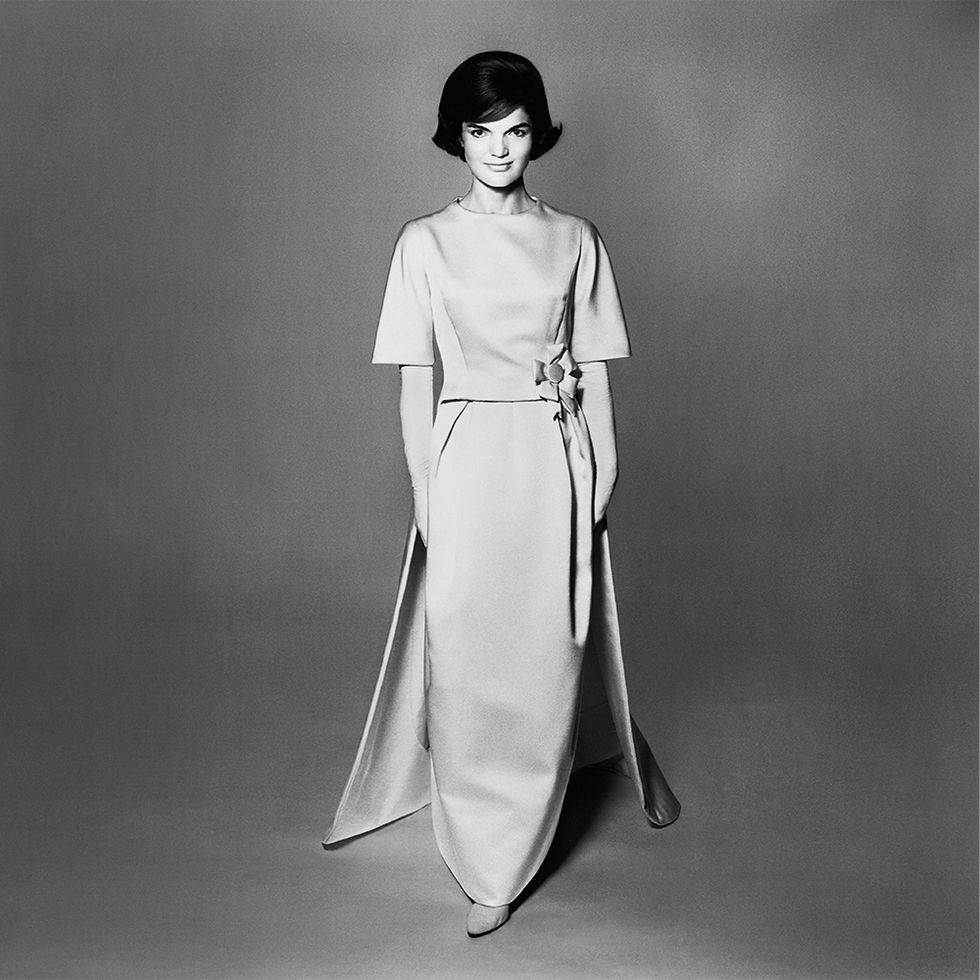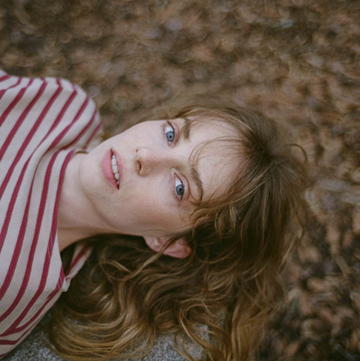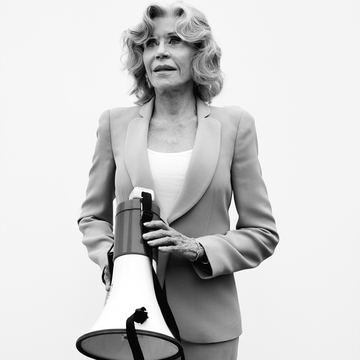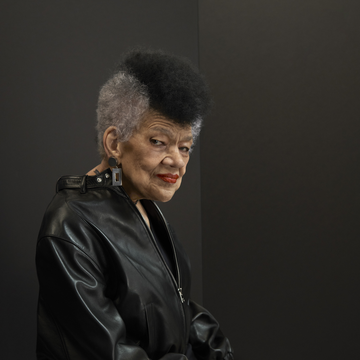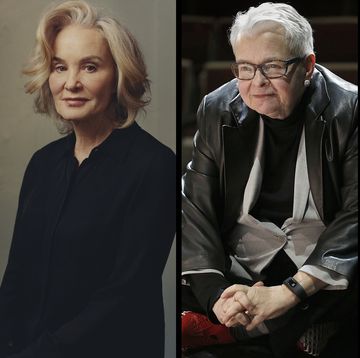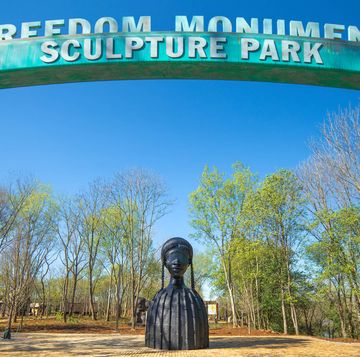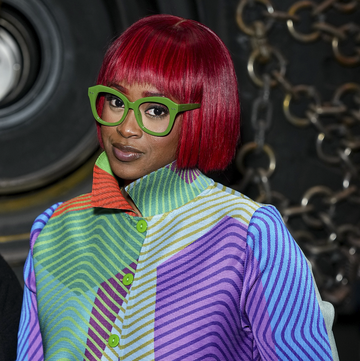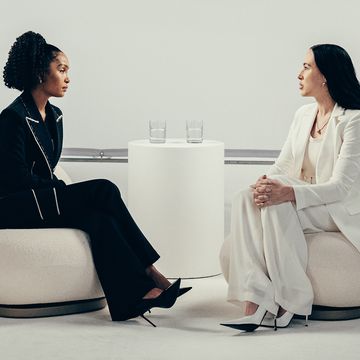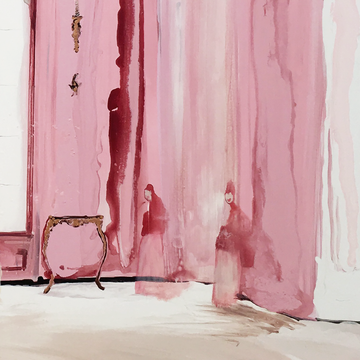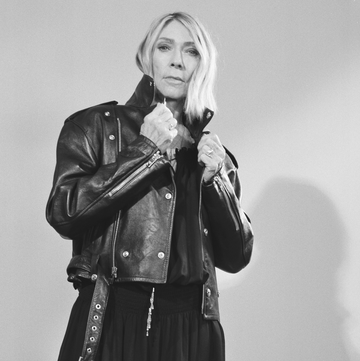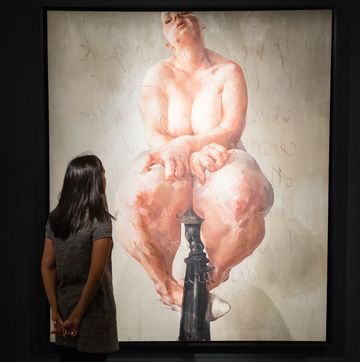Natalie Portman's portrayal of a grief-stricken Jacqueline Kennedy in Pablo Larraín's new film Jackie plumbs a powerful image of the former first lady seeking refuge in mystique, manner, and self-medication following the assassination of her husband, President John F. Kennedy. That Jackie—the widowed young mother of two small children—would become emblematic of a dark fragility that lurked just beneath the surface of American life. But it was in the pages of Bazaar on the eve of Camelot that another image of Jackie once emerged.
On January 3, 1961, photographer Richard Avedon and Bazaar fashion editor Diana Vreeland traveled to the Kennedy family compound in Palm Beach to photograph the president-elect, Jackie, and their children, Caroline and John Jr., for the magazine—the only formal session the new first family would sit for between the election and the inauguration that year. The shoot occurred on the same day that the U.S. officially severed diplomatic relations with Cuba, and according to Smithsonian curator Shannon Thomas Perich's book on the session, The Kennedys: Portrait of a Family, the president-elect spent much of the afternoon receiving updates from President Dwight D. Eisenhower's office as aides, Secret Service, and Kennedy family members (including matriarch Rose Kennedy) came and went. Jackie, who had given birth to John Jr. just five weeks earlier, was photographed in an evening gown by Oleg Cassini that she later wore to a pre-inaugural gala, and six black-and-white portraits from the sitting appeared in Bazaar'sFebruary issue, offering a glimpse of the new president, his wife, and his children not as state figures but as an American family.
The session came about in large part because of a friendship that Jackie had forged with Vreeland during her husband's campaign. Vreeland first encountered Jackie, then Jacqueline Bouvier, in the mid-1940s. The daughter of socialite Janet Lee and stockbroker John Bouvier III and the stepdaughter of Standard Oil heir Hugh D. Auchincloss, Jackie had attended Miss Porter's School in Connecticut and moved in northeastern society circles. In 1947, she was even anointed "the Queen Deb of the year" by Igor Cassini—Oleg's younger brother—who wrote a syndicated gossip column under the name Cholly Knickerbocker.
The nuptials between Jackie and then senator John—both born into wealthy Roman Catholic families—almost landed them in Bazaar even before John ran for president. In 1953, Jackie invited Toni Frissell, a family friend who shot for the magazine, to photograph the couple's September 12 wedding reception at the Auchincloss family home, Hammersmith Farm, in Newport, Rhode Island.Bazaar's editor, Carmel Snow, though, later declined to run Frissell's images, fearing the marriage had already garnered too much press.
In August 1960, Vreeland received a letter from Jackie, who was grappling with the then novel political problem of having her worldly tastes and affinity for European fashion designers, such as Balenciaga, Chanel, and Givenchy, dissected in the media. In the 10-page handwritten entreaty, Jackie asked for help. "I must start to buy American clothes and have it known where I buy them," she wrote. "There have been several newspaper stories … about me wearing Paris clothes, and Mrs. Nixon running up hers on the sewing machine." Jackie lamented that a lot of the eveningwear she had seen from American designers like James Galanos, Norman Norell, and Arnold Scaasi, who had created gowns for Mamie Eisenhower, wasn't right; in Mainbocher, she offered, "I just look like a sad mouse," but wondered if he might be the best choice for an inaugural ball—"which it is really jumping the gun to think about." Vreeland agreed to advise her and did so throughout the campaign.
The choice to unveil the new first family in Bazaar was Jackie's way of saying thank you. "I was furious today when I read Newsweek on how everyone is wondering why we chose Harper's Bazaar," Jackie told Vreeland after the sitting, "and they invent a million reasons and no one says the real one—which is you." It was the beginning of a friendship that would last for nearly three decades.
Jackie's style—a mix of sophistication and simplicity—evolved during her brief time in the White House. Kennedy friend Oleg Cassini, who had dressed Rita Hayworth and Joan Crawford, was named her official wardrobe designer. "She liked my Hollywood experience," Cassini told Bazaar in 1994. "I was trained to work from a script to create a look and a personage." According to Cassini, it was Jackie, not John, who cultivated the vision of Camelot that the Kennedy presidency came to embody. "Jackie created Camelot herself," Cassini said. "She's the one who had the time, the desire, the taste."
In 1964, shortly after President Kennedy's assassination, Jackie sat for a series of interviews with author, historian, and Kennedy associate Arthur M. Schlesinger Jr. in which she reflected on assuming the role of first lady. "I was never any different once I was in the White House than I was before, but the press made you different," she said. "Your hair, that you spoke French, that you didn't just adore to campaign, and you didn't bake bread with flour up to your arms—you know, everyone thought I was a snob and hated politics. Well, Jack never made me feel that I was a liability to him, but I was," she continued. "And when we got in the White House all the things that I'd always done suddenly became wonderful because anything the first lady does that's different, everyone seizes on—and I was so happy for Jack. Because it made him so happy—it made me so happy. So those were our happiest years."
